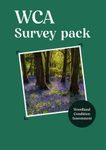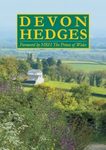Textbook Handbook / Manual
By: Joseph A Veech(Author)
215 pages, 10 colour & b/w photos, 37 colour & b/w illustrations, tables
This book connects the disciplines of ecology and wildlife biology by arguing for the importance of habitat in determining where a species exists in nature and in what abundance.
![Habitat Ecology and Analysis Habitat Ecology and Analysis]()
Click to have a closer look
About this book
Contents
Customer reviews
Biography
Related titles
About this book
The identification and analysis of the particular habitat needs of a species has always been a central focus of research and applied conservation in both ecology and wildlife biology. Although these two academic communities have developed quite separately over many years, there is now real value in attempting to unify them to allow better communication and awareness by practitioners and students from each discipline.
Despite the recent dramatic increase in the types of quantitative methods for conducting habitat analyses, there is no single reference that simultaneously explains and compares all these new techniques. This accessible textbook provides the first concise, authoritative resource that clearly presents these emerging methods together and demonstrates how they can be applied to data using statistical methodology, whilst putting the decades-old pursuit of analyzing habitat into historical context.
Habitat Ecology and Analysis is written for senior undergraduate and graduate students taking courses in wildlife ecology, conservation biology, and habitat ecology as well as professional ecologists, wildlife biologists, conservation biologists, and land managers requiring an accessible overview of the latest methodology.
Contents
Part I: History, Concepts, Models, and Goals
1: Introduction
2: Ecology and Wildlife Ecology as Distinct Academic Disciplines
3: The Primacy of Habitat
4: Goals of Characterizing a Species Habitat
Part II: Statistical Methods of Analysis
5: Types of Data and the General Framework of Analysis
6: Issues Based on Species Life History and Behavior
7: Design and Statistical Issues Related to Habitat Analysis
8: Analysis of the Habitat Associations of a Hypothetical Beetle Species
9: Statistical Methods for Analyzing Species-Habitat Associations
10: Post-analysis Procedures
11: Other Techniques Related to Habitat Analysis
12: Conclusion
Customer Reviews
Biography
Joseph A. Veech is Associate Professor at the Department of Biology, Texas State University, USA. He has broad research interests in the ecological and evolutionary factors that affect the distribution and abundance of species and biodiversity. A particular focus of his research concerns the over-riding importance of habitat. He is also interested in developing novel methods for the statistical analysis of ecological data, teaching those methods, and instilling quantitative proficiency in students.
Textbook Handbook / Manual
By: Joseph A Veech(Author)
215 pages, 10 colour & b/w photos, 37 colour & b/w illustrations, tables
This book connects the disciplines of ecology and wildlife biology by arguing for the importance of habitat in determining where a species exists in nature and in what abundance.
"[...] This book represents a different and welcome approach on the usual statistical method texts. The author's aim of presenting complex material in straightforward terms has been met, making this book easy to read for the beginner. The idea of a narrative development of the topic adds people to the mix where this is too often missing in courses. The notion of building understanding and skills in a logical progression from initial thoughts to detailed statistical analysis via a comprehensive case study will encourage those starting out research in this area."
– Paul Ganderton, The Niche 53(1), spring 2022



































